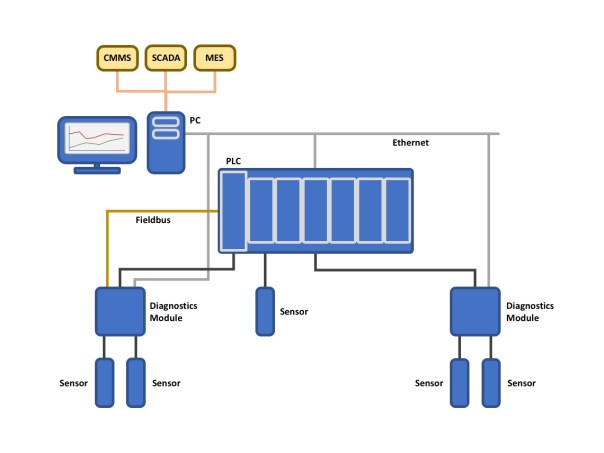Simple smart solutions to solve smart demands
Another major benefit from contemporary automation is, very simply, the performance gains you will achieve in terms of throughput, uptime and return on investment (ROI). Servo systems may be perceived to be more complicated and more expensive, but in the greater scheme of things, when you consider overall equipment effectiveness (OEE), modern solutions eclipse the ratings of their traditional mechanical peers. The capital expenditure may be higher, but the operating expenditure will be lower.
The first step of any machine modernisation exercise is to decide what hardware you need to perform the functions you require and, just as importantly, how they are going to “talk” to each other and your wider enterprise, in order to deliver the two-way data exchange that underpins Industry 4.0. Many industrial fieldbus protocols exist, covering different levels and applications, but at the higher-level Ethernet and Ethernet-based systems are rapidly gaining a foothold.
Most major automation vendors offer standard or standard-based Ethernet solutions, which deliver far more flexibility than the closed, proprietary fieldbuses we saw 10 years ago. Ethernet may not be the best solution for level 0 automation, but this is no longer an issue, with programmable logic controllers (PLC) and programmable automation controllers (PAC) acting as the middle man, liaising with the data-hungry higher-level systems.
PLCs and PACs are the brains of the system, providing all the control aspects and the interface with other up- and down-stream operations. Like any automation asset, users are spoilt for choice when it comes to suppliers, but this does deliver the advantage of being able to find best-fit solutions as opposed to over- or under-engineering your control solution. The major vendors also recognise the fact that PLC selection can be a bit of a black art, especially to those without adequate immersion in these types of systems.
The first step of any machine modernisation exercise is to decide what hardware you need to perform the functions you require and, just as importantly, how they are going to “talk” to each other and your wider enterprise, in order to deliver the two-way data exchange that underpins Industry 4.0. Many industrial fieldbus protocols exist, covering different levels and applications, but at the higher-level Ethernet and Ethernet-based systems are rapidly gaining a foothold.

| Figure 1: Ethernet is rapidly gaining a foothold as the interconnection protocol for automation systems. |
Most major automation vendors offer standard or standard-based Ethernet solutions, which deliver far more flexibility than the closed, proprietary fieldbuses we saw 10 years ago. Ethernet may not be the best solution for level 0 automation, but this is no longer an issue, with programmable logic controllers (PLC) and programmable automation controllers (PAC) acting as the middle man, liaising with the data-hungry higher-level systems.
PLCs and PACs are the brains of the system, providing all the control aspects and the interface with other up- and down-stream operations. Like any automation asset, users are spoilt for choice when it comes to suppliers, but this does deliver the advantage of being able to find best-fit solutions as opposed to over- or under-engineering your control solution. The major vendors also recognise the fact that PLC selection can be a bit of a black art, especially to those without adequate immersion in these types of systems.
Read full article
Hide full article



Discussion (0 comments)